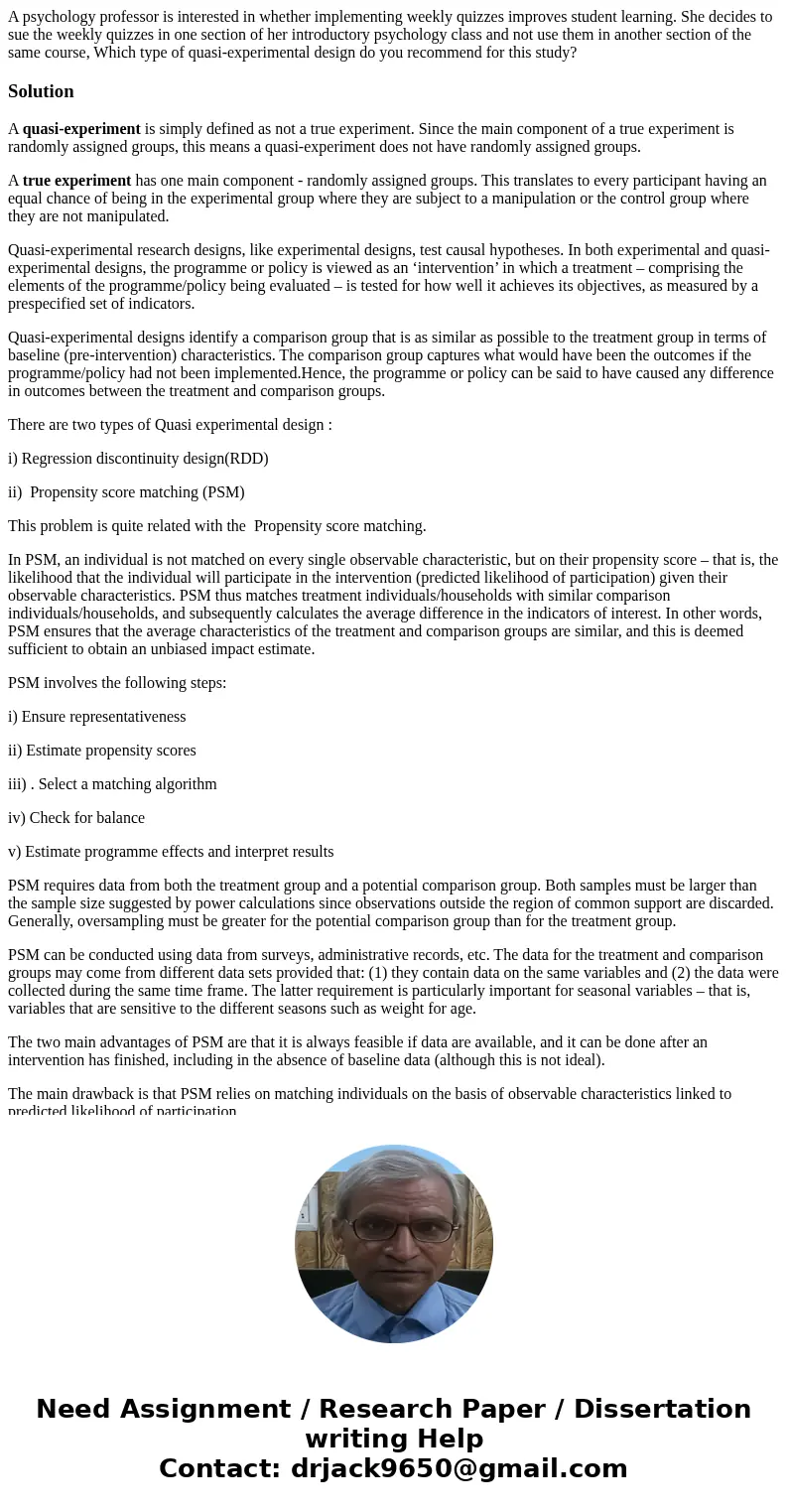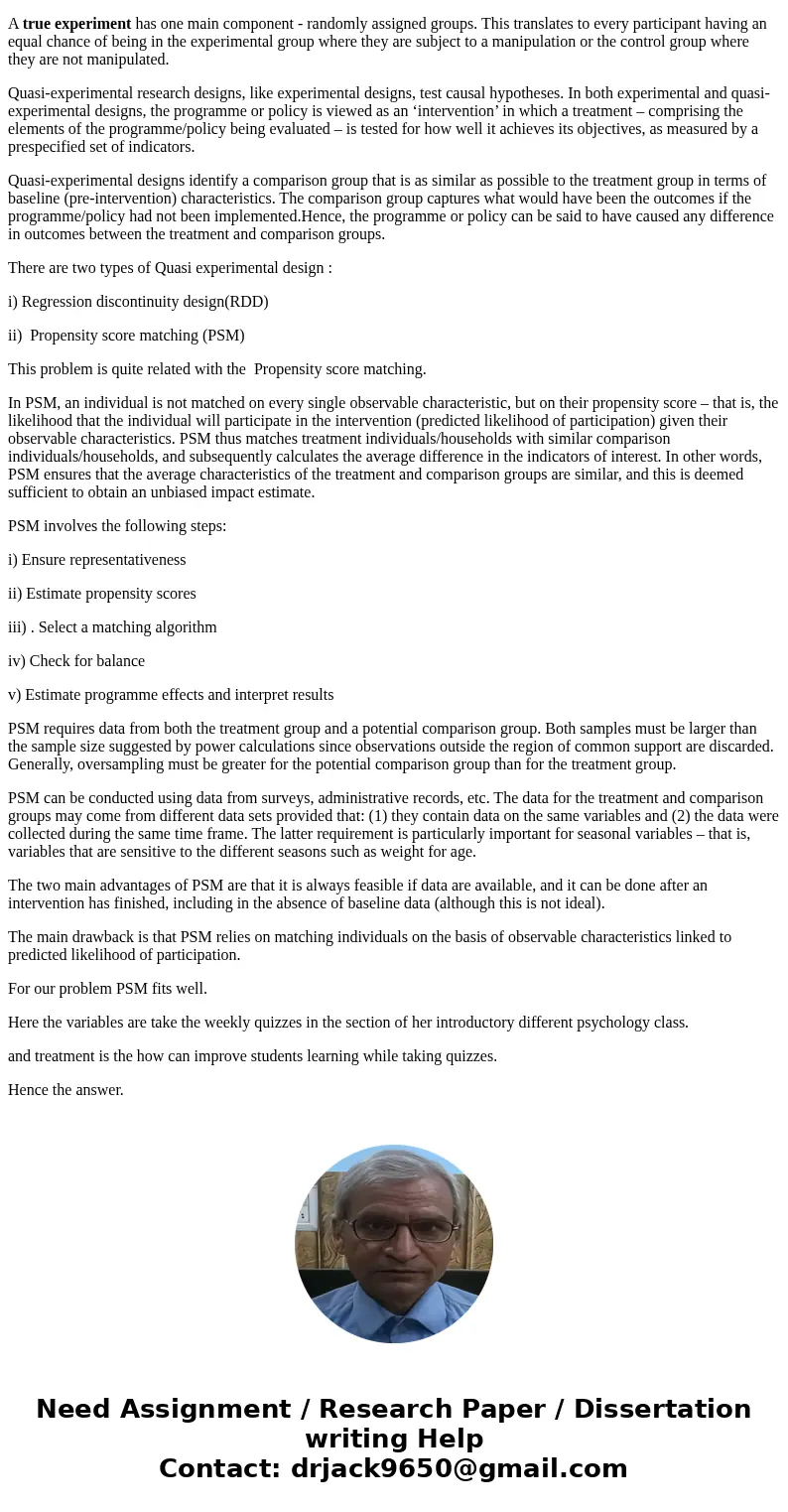A psychology professor is interested in whether implementing
A psychology professor is interested in whether implementing weekly quizzes improves student learning. She decides to sue the weekly quizzes in one section of her introductory psychology class and not use them in another section of the same course, Which type of quasi-experimental design do you recommend for this study?
Solution
A quasi-experiment is simply defined as not a true experiment. Since the main component of a true experiment is randomly assigned groups, this means a quasi-experiment does not have randomly assigned groups.
A true experiment has one main component - randomly assigned groups. This translates to every participant having an equal chance of being in the experimental group where they are subject to a manipulation or the control group where they are not manipulated.
Quasi-experimental research designs, like experimental designs, test causal hypotheses. In both experimental and quasi-experimental designs, the programme or policy is viewed as an ‘intervention’ in which a treatment – comprising the elements of the programme/policy being evaluated – is tested for how well it achieves its objectives, as measured by a prespecified set of indicators.
Quasi-experimental designs identify a comparison group that is as similar as possible to the treatment group in terms of baseline (pre-intervention) characteristics. The comparison group captures what would have been the outcomes if the programme/policy had not been implemented.Hence, the programme or policy can be said to have caused any difference in outcomes between the treatment and comparison groups.
There are two types of Quasi experimental design :
i) Regression discontinuity design(RDD)
ii) Propensity score matching (PSM)
This problem is quite related with the Propensity score matching.
In PSM, an individual is not matched on every single observable characteristic, but on their propensity score – that is, the likelihood that the individual will participate in the intervention (predicted likelihood of participation) given their observable characteristics. PSM thus matches treatment individuals/households with similar comparison individuals/households, and subsequently calculates the average difference in the indicators of interest. In other words, PSM ensures that the average characteristics of the treatment and comparison groups are similar, and this is deemed sufficient to obtain an unbiased impact estimate.
PSM involves the following steps:
i) Ensure representativeness
ii) Estimate propensity scores
iii) . Select a matching algorithm
iv) Check for balance
v) Estimate programme effects and interpret results
PSM requires data from both the treatment group and a potential comparison group. Both samples must be larger than the sample size suggested by power calculations since observations outside the region of common support are discarded. Generally, oversampling must be greater for the potential comparison group than for the treatment group.
PSM can be conducted using data from surveys, administrative records, etc. The data for the treatment and comparison groups may come from different data sets provided that: (1) they contain data on the same variables and (2) the data were collected during the same time frame. The latter requirement is particularly important for seasonal variables – that is, variables that are sensitive to the different seasons such as weight for age.
The two main advantages of PSM are that it is always feasible if data are available, and it can be done after an intervention has finished, including in the absence of baseline data (although this is not ideal).
The main drawback is that PSM relies on matching individuals on the basis of observable characteristics linked to predicted likelihood of participation.
For our problem PSM fits well.
Here the variables are take the weekly quizzes in the section of her introductory different psychology class.
and treatment is the how can improve students learning while taking quizzes.
Hence the answer.


 Homework Sourse
Homework Sourse